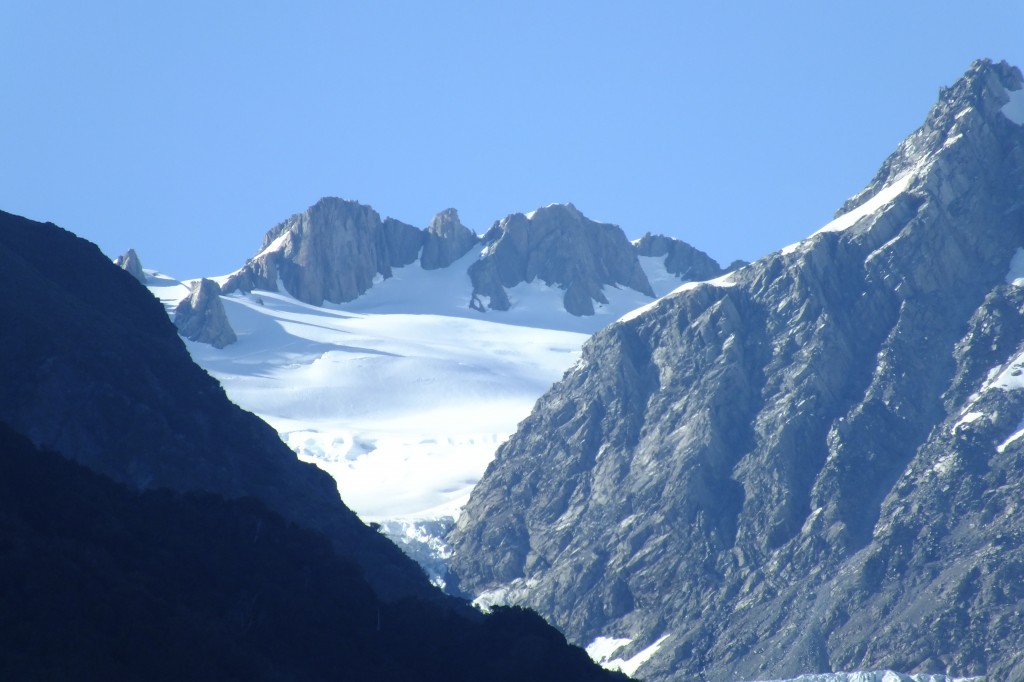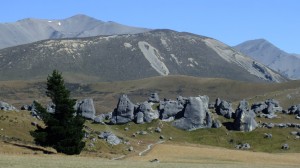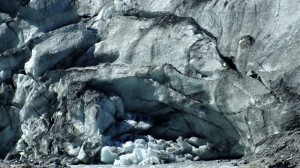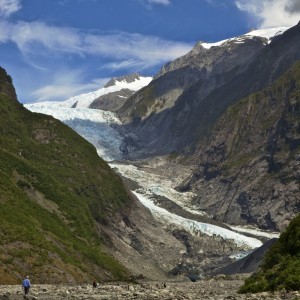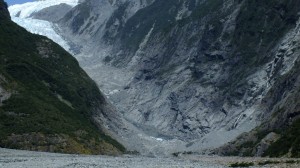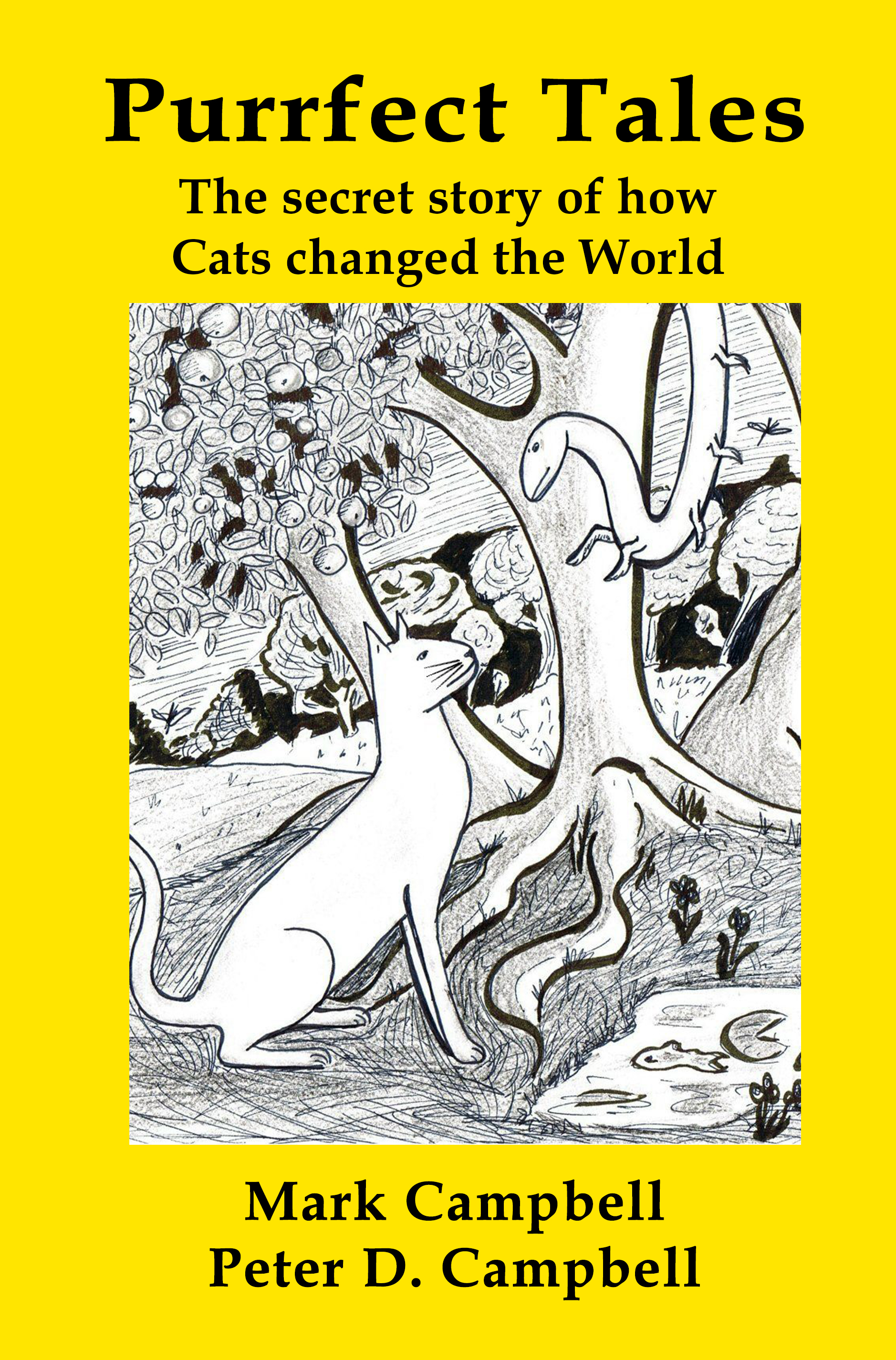Heading west from Christchurch, Peter Campbell travels through some spectacular scenery to visit New Zealand’s glaciers, and discovers an imposing new landscape left by the retreating ice.
It is one of my many regrets that I am not a geologist. The closest I come to geology is reading Bill Bryson’s A Short History of Nearly Everything, and as far as I can recall he doesn’t exactly discuss a huge amount of geology in that tome. However, geology is something I wish I knew something more about, not only does it explain strange things like when the earth suddenly begins shaking but it explains why the natural world we live in looks the way it does and explains some of the amazing phenomena we see and experience in New Zealand with such wonderful locations as Milford Sound, the Punakaiki coast (famous for its Pancake Rocks), Abel Tasman National Park, Mt. Egmont/Taranaki, Mt. Cook/Aoraki, Mt. Tongariro etc. One of the most remarkable locations in New Zealand is the west coast of the South Island which is home to the Franz Joseph and Fox Glaciers. Glaciers are remarkable rivers of ice that cut their way down from mountain basins, and when finally they withdraw they leave distinctive ‘U’ shaped valleys, dizzyingly high cliffs and huge boulders in their wake. Due to the odd ice-age, glaciers have left their mark on much of the world, even on those locations that seem far removed from mountain valleys or icy climes.
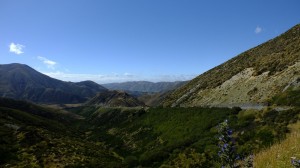
Geddes Pass has an uncomfortably steep slope to get up and an even steeper slope to fall off if you lose control of your car
New Zealand’s best known and most spectacular glaciers are about six hours’ drive from Christchurch. You take the Highway 73 west past hobby farms and lifestyle blocks following the course of the Waimakariri River, until you reach the step hills and climb Geddes Pass – which should perhaps be Giddy Pass – to enter into the stunning scenery of Canterbury’s hinterland. Here you will find steep hills and mountains on every side. In summer these slopes are covered in tussock, before giving way to bare, barren rock and scree slopes. In the winter they are likely to be covered in snow. It is this area which was used for filming many of the scenes from The Lion the Witch and the Wardrobe.
Among these mountains small streams flow or form into mountain lakes. A little further on you will pass Castle Hill, an area scattered with huge boulders, rounded by water which makes a delightful picnic spot, and is popular among rock climbers and boulderers. A little further down the road is Cave Stream – a subterranean stream which in summer time can be swum by the more adventurous. The road then narrows as you get deeper into the mountains.
Afterwards, you reach Arthur’s Pass, known for the surveyor who discovered the route to the west coast back in the 1860s. It is now mainly a stopping off point for the west coast and a tourist settlement where it is possible to explore some of New Zealand’s mountainous landscapes. After a brief pause to visit a local landmark, the Devil’s Punchbowl, I went continued on my journey.
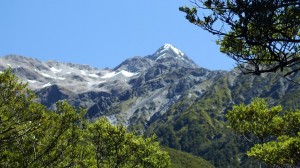
Arthur’s Pass is an attractive stopping off point to do some tramping and see some of mountainous New Zealand
The west coast comprises steep mountains falling rapidly away to a narrow coastal plain. Much of the forest in this part is temperate rainforest with high rainfall throughout the year as fronts are blown across from the Tasman see and hit the mountains and causing high levels of precipitation. Fog lies in valleys and the primordial forests look like something from The Lost World – minus the dinosaurs and great apes.
Despite the lack of dinosaurs and great apes the West Coast offers rare views of a rapidly diminishing geological feature. New Zealand’s glaciers are probably more accessible than any in the world.
The last time I visited the glaciers was in 2003. They were in retreat then with huge cliffs of ice going up maybe 100 metres that every so often would throw huge clumps of ice that would smash into the rocks below or plummet into the grey river that flows out beneath both glaciers.
The surrounding territory is awe inspiring with steep vertical cliffs encircling the valley dwarfing you, while their size is incomprehensible.
Back in 2003, Fox Glacier was visible from the car park and it was a short walk to the glacier’s face. Now, there are signs to indicate where to find the glacier and it is only after a long and steep walk that you can see the glacier. While the glacier has lost much of its majesty the surrounding landscape has not. Where once there was only ice now lies huge volumes of gravel and rock, giant boulders and steep mountain sides and cliffs. Somewhere up above the gravel line is a wooden staircase leading from an old track into thin air. It used to be an access route onto the glacier. The retreat of the glacier, more than anything, reinforces how large it had been, not just in length, but in volume.
The path is steep and the sun reflects on the grey surfaces of the valley and the gravel, creating a stifling micro-climate and bright environment.
Eventually, when you reach the glacier, it is no longer the impressive ice wall throwing down builders of ice, but rather a tongue of ice worming its way down the valley. As its volume has decreased, so has the height of the glacier. This has led to gravel collapsing onto the top of the glacier, making it dirty and changing its appearance.
This midget of a glacier is nonetheless impressive, especially when you finally notice the small specks on the glacier that are people going on a tour.
Returning from Fox Glacier, I then headed back north along the windy road that crawled its way round the mountain sides, with the occasional wisp of cloud clinging to a forgotten valley.
As I approached Franz Joseph Glacier, named after the Austrian emperor by German explorer Julius von Haast, I could make out the obverse of Mt. Cook – New Zealand’s highest mountain.
By the time I reached the car park for the Franz Joseph Glacier, the sun had climbed to its zenith and the walk, which had always been longer than at the Fox seemed to take forever as I followed the path towards the retreating glacier.
Again, clambering over the rocky remnants of the glacier, you begin to fully comprehend the scale of these ice age wonders of the world. The route is littered with clumps of moraine abandoned by the ice in the middle of the valley. Down the mountain slopes run numerous little waterfalls that trickle into the main river that gushes grey towards the sea – and provide welcome relief from the frying sun that beats down and reflects off the rocks. The valley of the Franz Joseph Glacier feels unreal and alien – the size of the mountains and the rocks that enclose you on three sides the presence of water and ice, combined with the heat of the sun confuses you. It was this experience that impressed me more than the glacier itself.
At present, unless on a guided tour you never really reach the face of the glacier, although, where you finally stop, you are probably already on ice, but ice buried under a thick layer of gravel. Up a little further ahead you can see the glacier’s tongue looming ahead beyond a steep slope of gravel with the slight blue haze beneath it, revealing it as the hidden face of the glacier. The Franz Joseph is currently the more impressive of the two glaciers, but such judgements are both subjective and temporary – for a long time Fox was the more majestic.
The two glaciers were the marvels of New Zealand’s west coast, and even today in their diminutive state they are still worth a visit – the scenery ranks as some of the best in the country and the these rivers of ice are a disappearing wonder of the world.
Be sure to like Intrepid Adventure on Facebook and check out Peter Campbell’s latest books on Amazon.com.
Copyright © Peter Campbell 2014, www.intrepid-adventure.com
